Midweek Review
India’s Vietnam moment, US pullout and Afghan dilemma
UNP’s call to terminate diplomatic relations with Taliban questionable
By Shamindra Ferdinando
Can the recent US pullout, from Afghanistan, be compared with the Indian withdrawal, from Sri Lanka ,in late March 1990? Some sections of the Western media, at that time ,called the disastrous Indian military intervention here (July 1987-March 1990) India’s Vietnam. Reference was also made to what some called India’s Vietnam moment. The Washington Post report, that dealt with the situation in Sri Lanka, in the wake of ‘Operation Pawan,’ was aptly headlined, India’s Vietnam? The US media giant declared: “One reason that Sri Lanka had been unable to tame the ‘Tamil Tigers’ was the support that an indulgent New Delhi had let flow to them from India’s 50 million Tamils.”
What the Washington Post report, dated Oct 27, 1987, left unsaid, was that New Delhi armed over a half a dozen terrorist groups, in Sri Lanka, on the specific instructions of the then Indian Premier, Indira Gandhi, though Tamil Nadu was routinely blamed for the aggression. No less a person than the late Indian National Security Advisor and veteran diplomat J.N. Dixit, who had been Indian High Commissioner in Colombo (1985-1989) in his memoirs ‘Makers of India’s Foreign Policy’ acknowledged the executive prime ministerial decision to arm terrorists here.
Dixit’s declaration should be examined against the backdrop of Indira Gandhi‘s assassination by her Sikh bodyguards, on Oct 31, 1984. When did Indira Gandhi actually authorise arming of terrorist groups in Sri Lanka?
May be we shouldn’t be so unkind to Mrs. Gandhi, for obviously she was also a victim of circumstances, clearly sowed by the West. Mind you this was a time when the West was clearly lighting separatist fires right across India, be it in Punjab, Assam or Tripura. And the separatist fire that was lit here had, as its final aim, the breakup of India. The July ’83 riots, in the country, were clearly due to manipulation of the police here not to nip it in the bud by powerful interests. We even saw at firsthand how police, in different areas, went round egging the poor, among the Sinhalese and Muslims, to attack Tamils, who were considered the haves. So, in the resultant picture of mob violence, against hapless Tamils, that was created, can we blame Mrs. Gandhi for the counter steps that she took? She wanted to show the huge long restless Tamil population, in Tamil Nadu, that it was not the West that would give succor and protection to Tamils, in Sri Lanka, but mother India. The West even would have had plenty of infiltrators among her intelligence to feed her fears. From the word go, mind you, it was not in India that many of these separatists had their rear bases but in the capitals of the powerful West. For example, the LTTE International Secretariat was based in London, even after the assassination of Rajiv Gandhi by it. Of course, their lame excuse was that the LTTE had not violated British laws!
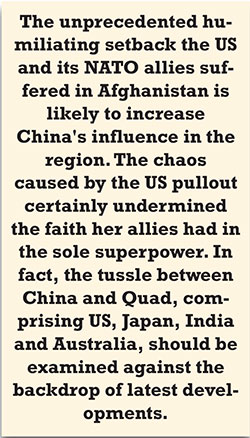 She may have even assented to the ambush of a Sri Lankan military patrol, by Tamil terrorists, at Thinnavely, Jaffna, that was used by vested forces to trigger the anti-Tamil violence, in the south, with police not lifting a finger to stop it, let alone even firing a warning shot.
She may have even assented to the ambush of a Sri Lankan military patrol, by Tamil terrorists, at Thinnavely, Jaffna, that was used by vested forces to trigger the anti-Tamil violence, in the south, with police not lifting a finger to stop it, let alone even firing a warning shot.
There had been an interesting incident, around 1977, at a cocktail party, in Manila, where a big talking American, who was obviously after one too many, had boasted to our Ambassador there, the late Oliver Perera, that soon there would be an armed rebellion, by Tamils, in Sri Lanka!
Obviously, Indira Gandhi’s assassination didn’t halt the despicable Indian project which culminated with the deployment of the Indian Army here. She was succeeded by son Rajiv, 40, the sixth and the youngest Indian Premier who intensified assistance to terrorist groups here. PM Gandhi also intervened, on behalf of the LTTE ,when the latter faced certain defeat in the hands of the Sri Lankan military.
If Rajiv Gandhi returned at the 1989 general election, the then Sri Lankan President Ranasinghe Premadasa, elected in the previous year, wouldn’t have succeeded in getting rid of the Indian Army. Those who propagated, and justified, New Delhi’s direct intervention, here, following the July 1983 violence, directed at the Tamil community, conveniently ignored the truth that India triggered the riots by causing the deaths of 13 soldiers at Thinnaveli, in Jaffna. There had never been such a devastating attack on the Army, until Indian trained terrorists wiped out the lightly armed mobile patrol.
Can the US invasion of Afghanistan, in the wake of the 9/11 carnage, and the Indian military misadventure, in Sri Lanka, be compared? In the case of Afghanistan, the US invaded that country, on the pretext of going after those responsible for 9/11, receiving refuge there, whereas New Delhi forced Army deployment here to impose a ‘political’ solution. Over 30 years later, the Indian solution is on the Geneva agenda!
On both occasions, powerful foreign forces had pathetically failed to achieve their primary objectives, though the circumstances were totally different. For the US, both Afghanistan and the fall of Saigon, way back, in late April 1975, meant the humiliating failure of Washington’s strategic policy. In other words, the US abandoned South Vietnam and Afghanistan administrations, and here, in Sri Lanka, India gave up a Tamil administration, installed by its Army. India went to the extent of forming, what was dubbed, Tamil National Army (TNA) to protect the NE provincial administration.
The US-led NATO forces, invaded Afghanistan to destroy the Taliban administration, accused of providing safe haven to those responsible for the 9/11 attacks, though, at the end, the US negotiated with them whereas the Indian military mission was meant to disarm Tamil groups, once sponsored by New Delhi. It would be pertinent to mention that the US invaded Afghanistan, though the majority of those involved in the 9/11 attacks, were Saudis. Of the 19 attackers, 15 were Saudi citizens, two were from the United Arab Emirates (UAE), one was from Lebanon, and one from Egypt.
India destabilised Sri Lanka in a bid to create a situation, conducive for deployment of its Army, followed by Provincial Council elections, rigged in favour of the Eelam People’s Revolutionary Liberation Front (EPRLF). With the Indian Army deployed in Sri Lanka, New Delhi forced the then JRJ administration to introduce the 13th Amendment to the Constitution. As the writer pointed out before, the 13th Amendment has ended up in the Geneva agenda.
Perhaps, those who had referred to New Delhi’s military misadventure here as India’s Vietnam may consider calling the US withdrawal, from Afghanistan, America’s Sri Lanka moment. The US pullout caused the immediate collapse of 72-year-old Mohammad Ashraf Ghani’s Afghan administration. Twice President Ghani, with the knowledge of the US, secured political asylum in the UAE. Ghani couldn’t have done so without the blessings of the Biden administration. International media coverage of the pathetic scenes at the Kabul airport must have deeply embarrassed the US. Those who believed the Afghan National Defence and Security Forces — including an 180,000 strong Afghan National Army, and a police force with 150,000 personnel, besides an Air Force, and other security wings — trained by the US military, NATO and India – could face up to the Taliban. They simply folded up like a house of cards, proving utterly unequal to the task of holding on to territory, and containing the Taliban. The Afghan imbroglio cannot be discussed without taking into consideration the US-Taliban agreement, finalised in Doha, in Qatar, in February, last year. In other words, Biden implemented the agreement between his predecessor Trump and the Taliban. Most probably, the US must have sealed the fate of its costly mission by its blind drone strikes there, which would have killed many hundreds, if not thousands, of innocents, thereby turning many more Afghans against the whole false façade of the West, fighting for human rights and fair play for their much-exploited women. Surely, how many times did they strike funeral processions, or weddings, while targeting the Taliban, using their smart missiles? Now, they and their allies have turned tail and run, leaving behind for the Taliban to use billions of dollars’ worth of state-of-the-art weapons!
India also stepped up engagement with Taliban, in the wake of US moves to bring the 20-year-old disastrous Afghan chapter to an end. One shouldn’t be surprised by the Indian strategy, as India cannot lose its relationship with Afghanistan, in the wake of the US pullout. That would be a major blunder on India’s part. Perhaps, the Afghan military received instructions, from those who sponsored them, to quickly give up the fight. That possibility cannot be ruled out. Perhaps, Ghani knew of that likelihood. In spite of being trained and equipped by US and its NATO allies, the Afghan Army didn’t have the guts to face the Taliban, who advanced to Kabul without facing any organised resistance. Quad member India, too, provided training to thousands of Afghan officers, and men, both in Afghanistan as well as at various training facilities, in India, over a period of time. India also provided a range of weapons, including helicopter gunships to Afghanistan. Of several Mi-24 helicopter gunships provided by India, the Taliban seized one as the Afghan Army quickly gave up the fight for Kabul. The swift collapse of the Afghan Army must have definitely embarrassed those who trained them.
India deployed Mi-24s against the LTTE here whereas the Sri Lanka Air Force acquired the same, in 1995, after the LTTE introduced surface-to-air heat seeking missiles.
In 1990, Sri Lanka faced a situation similar to that faced by the Afghan military. The Sri Lankan military struggled to cope up with an unprecedented crisis. The vacuum created by the Indian withdrawal had to be filled quickly but the Army lacked the strength. However, the country’s intrepid armed forces faced the challenge. The military saved the country from a catastrophe, in the wake of the Indian pullout.
The writer was among a group of journalists, invited to board INS Magar,on the morning of March 24, 1990, at the Trincomalee harbour, soon after the last contingent of Indian troops boarded the troop-carrier. The vessel left the port to the farewell strains of Auld lang syne, played by the Sri Lankan military. Before their departure, the Indian Commander, here, Lt. General A.S. Kalkat, declared, on board INS Magar: “We came as a proud force and are leaving as a proud force.” India lost 1,155 IPKF officers, and men, on top of 2,984 personnel wounded. India never bothered to build a monument for those who perished during the conflict here.
The Afghan Army didn’t have the stomach to fight the Taliban though there were some confrontations between them, as the US stepped up withdrawal. India re-trained Tamil terrorists, belonging to several groups, as well as new cadres, including underage children, as a last minute effort to establish, what was then known as the Tamil National Army. The TNA was meant to protect the then North-East administration of EPRLF strongman Varatharaja Perumal. However, the TNA collapsed, even before India completed its withdrawal, under controversial circumstances. India evacuated Perumal, along with those near and dear to him. The LTTE assassinated Rajiv Gandhi over a year later. Gandhi’s crime was sending the Indian Army here. Prabhakaran conveniently forgot how Gandhi saved him, in 1987, when the Sri Lanka Army was advancing on his hideout in the Vadamaratchchy region.
Resumption of hostilities
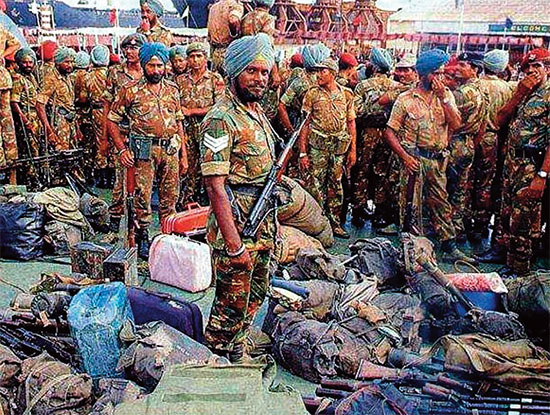
March 24, 1990, Trincomalee harbour: The last batch of Indian Army to leave Sri Lanka at the end of the disastrous mission
Less than three months, after India quit Sri Lanka, the LTTE resumed hostilities. Having gained valuable experience in fighting South Asia’s largest Army, the LTTE obviously believed the relatively smaller Sri Lanka Army could be overwhelmed in a meticulously planned offensive. By the end of June 1990, the LTTE had taken control of the Northern and Eastern Provinces, with the military confined to major bases. The police remained within their stations. When the writer, accompanied a group of journalists, assigned to cover the Indian departure ,from Trincomalee, the eastern port city was under threat. Both police and the military therein had no qualms in acknowledging the growing threat posed by LTTE units, operating just outside the town. Had the LTTE plan succeeded, Sri Lanka would have suffered an irrevocable setback in the Northern theatre of operations. As a result of miscalculations, on the part of the then political leadership, the LTTE had an opportunity to build up the required strength for a major offensive. The LTTE had the wherewithal to neutralise the Army, north of Vavuniya. Destruction, and the vacation of Army detachments, along the Kandy-Jaffna A9 road, isolated the Jaffna peninsula.
The LTTE couldn’t achieve its primary objective as the Army, in spite of being surrounded, managed to hold onto its strategic Elephant Pass base. The public would be surprised to know, at the time the LTTE resumed hostilities, the Army didn’t even have two battalions deployed in the entire Northern and Vanni regions. The then political and military leaderships never bothered to make contingency plans, as the Indians gradually withdrew from the Northern and Eastern regions. The last Indian contingent left by air, and sea, from Trincomalee, leaving the LTTE to isolate and destroy the police and the military. The LTTE realised the difficulties experienced by the military, primarily due to them not being at least engaged in proper patrolling. The armed forces, and the police, had been successful in neutralising the JVP threat (1987-1990) though the conventional LTTE challenge was not anticipated. The military hadn’t been prepared in the immediate aftermath of the Indian pullout.
Once the LTTE resumed hostilities, in the East, where the group massacred several hundred policemen, after they surrendered, on a government directive, the fighting quickly spread to the Northern theatre. The LTTE overran the Kokavil detachment, north of Vavuniya, in June 1990, and swiftly established control over the Vanni region. Successive governments had to move supplies, required by the military, and police, deployed in the Jaffna peninsula, by sea and air. The overland Main Supply Route (MSR) was restored in January 2009, during the final phase of the Vanni offensive.
The military and the police thwarted two JVP insurrections in 1971 and 1987-1990 and defeated conventional military challenges posed by the LTTE.
When the LTTE resumed hostilities, within months after the Indian withdrawal, in March 1990, the total strength of the Army had been 60,596 officers, and men, in both the Regular and Volunteer Forces. They had been deployed in isolated bases, with the majority outside the Northern and Eastern regions and, if not for the bravery of ordinary men and resolute leadership, given by some officers, they would have been overwhelmed in the Northern Province. Of the total strength at that time, the Regular Army comprised 2,221 officers and 36,304 other ranks. The Sri Lanka Army must have found the ground situation extremely difficult to handle as, at the height of the Indian Army deployment here, the IPKF comprised approximately 100,000 officers and men.
TNA’s view on Taliban
Jaffna District Illankai Tamil Arasu Kadchi (ITAK) MP Sivagnanam Sridharan recently compared the spectacularly successful Taliban advance, on Kabul, and the Tamil community’s struggle. Sridharan declared that struggles, undertaken by minority communities, could erupt at any moment. Justifying their struggle, MP Sridharan warned of dire consequences if the community was suppressed. Obviously, the Jaffna District lawmaker believed the Taliban’s return to Kabul boosted the Tamil community. Sridharan should be reminded that his political party served the LTTE’s terror project, from 2001 until the crushing military defeat of the organisation, in May 2009. The TNA believed in the LTTE’s capability to bring its terror project to a successful conclusion. MP Sridharan, expecting Taliban to provide a boost, shouldn’t come as a surprise, as another TNA lawmaker. M.A. Sumanthiran, PC, attempted to exploit the 2019 Easter Sunday attacks. The TNA heavyweight had no doubts in issuing a warning, a week after the Easter Sunday carnage (at the BMICH), when he declared that such attacks should be expected if grievances of minorities weren’t addressed.
Norwegian Anders Behring Breivik, 32, shocked the world, in late July 2011, by massacring 90 and wounding over 300 in two separate incidents. Breivik made references to the LTTE as a role model in his ‘manifesto’ that was released to the web, hours before the devastating bomb attack, in central Oslo, and the subsequent shooting rampage in an island resort. So no one should be surprised over MP Sridharan talking in glowing terms about Taliban’s triumph, or MP Sumanthiran seeing the Easter Sunday massacre as a way to pressure the government over minority rights.
UNP Chairman Vajira Abeywardena’s recent call to terminate diplomatic ties with Afghanistan, in the wake of the Taliban triumph, reminded the writer of UNP leader Ranil Wickremesinghe assuring Japan (now a Quad member) that the LTTE hadn’t been involved with Al Qaeda. The assurance was given at a meeting organised by the Japan Center for Conflict Prevention (JCCP) at the Imperial Hotel. The writer accompanied the GoSL delegation, led by the then Premier Ranil Wickremesinghe whose task was to appreciate the Japanese role in the Oslo-led peace process (LTTE not linked to al-Qaeda, PM tells Japan-The Sunday Island, Dec 8, 2002). The Taliban provided a safe haven for those who had fought the Soviet Union, in the wake of its invasion of Afghanistan, in Dec 1979. Osama bin Laden had been among those who secured the protection of Taliban, having served US interests during the Soviet occupation of Afghanistan. The Western media, and top US officials, have routinely referred to Afghanistan being the Soviet Union’s Vietnam. Decades later, the same fate has befallen the US military.
Midweek Review
Batalanda and complexities of paramilitary operations
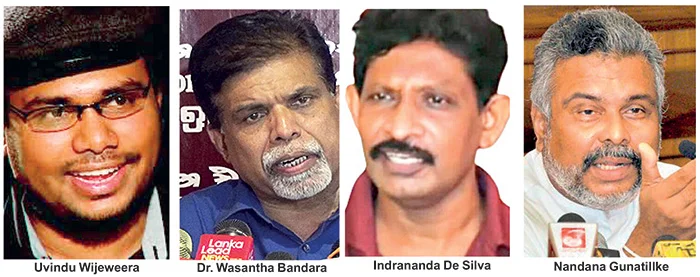
Former President Ranil Wickremesinghe’s recent combative ‘Head-to-Head’ interview with British-American Mehdi Hasan on Al Jazeera has opened a can of worms. As to why Hasan raised the Batalanda Presidential Commission report, during a 49-minute interview conducted at the London’s Conway Hall, with a clearly pro LTTE audience, remains a mystery. This must be yet another notorious way to show how even-handed they are as in the case of its coverage of Russia, China, Palestine or Ukraine for their gullible viewers.
Recorded in February and aired in March 2025, the interview is definitely the most controversial the UNP leader, who is also an Attorney-at-Law, ever faced during his political career; always used to getting kid glove treatment, especially after taking over the party in 1994.
The continuing public discourse on Batalanda should provoke a wider discussion on Sri Lanka’s response to separatist Tamil terrorism, since the cold blooded murder of Jaffna SLFP Mayor Alfred Duriappah, which signalled the beginning of the LTTE terror campaign that ended in May 2009 with the crushing military defeat of the Tigers on the banks of the Nathikadal lagoon, as well as two southern insurgencies in 1971 and 1987-1990.
As Nandana Gunatilleke (one time JVP General Secretary and ex-MP), Dr. Wasantha Bandara (ex-JVPer and close associate of the slain JVP leader Rohana Wijeweera), Indrananda de Silva (ex-JVPer, incumbent Central Committee member of Frontline Socialist Party [FSP] and ex-military photographer) and Uvindu Wijeweera (Rohana Wijeweera’s son and leader of Dewana Parapura) agreed during the recent Hiru ‘Balaya’ discussion, conducted by Madushan de Silva, the Batalanda operation was in line with the overall counter-terrorist/insurgency strategy of the then government.
The issues at hand cannot be discussed at all without taking into consideration the JVP terrorism that, at one-time, almost overwhelmed the UNP’s unbroken rule, since 1977, carried out while openly brushing aside most of the universally accepted genuine parliamentary norms. The country’s second Republican constitution, promulgated by the UNP regime with a 5/6 majority in Parliament, in 1978, had been amended no less than 13 times by the time they were finally ousted in 1995. This was mainly to facilitate their continuous rule. Unfortunately, all stakeholders have sought to take advantage of Batalanda, thereby preventing a proper dialogue. Quite surprisingly, none of the guests, nor the interviewer, bothered, at least, to make a reference to the JVP bid on President J.R. Jayewardene’s life in Parliament on the morning of July 18, 1987. At the time, JVPer Ajith Kumara, working in the House as a minor employee, hurled two hand grenades towards JRJ, with the then Prime Minister Ranasinghe Premadasa seated next to JRJ. While one government MP lost his life, several others suffered injuries, including then National Security Minister Lalith Athulathmudali, whose spleen had to be removed.
At one point, Gunatilleke declared that they assassinated UNP MP for Tangalle Jinadasa Weerasinghe on July 3, 1987, in response to the government killing well over 100 people, in Colombo, protesting against the signing of the Indo-Lanka accord on July 29, 1987. The parliamentarian was killed near the Barawakumbuka-Welangahawela bridge on the Colombo-Rathnapura-Embilipitiya Road. The UNPer was killed on his way home after having declined Premier Premadasa’s offer to make an SLAF chopper available for him to reach home safely.
Against the backdrop of MP Weerasinghe’s assassination and the grenade attack on the UNP parliamentary group that claimed the life of Keethi Abeywickrema (MP for Deniyaya), the government had no option but to respond likewise. The operation, established at the Batalanda Housing scheme of the State Fertiliser Corporation, constituted part of the counter-insurgency strategy pursued by the UNP.
Those who called Batalanda complex Batalanda torture camp/ wadakagaraya conveniently forgot during the second JVP inspired insurgency, the military had to utilize many public buildings, including schools, as makeshift accommodation for troops. Of course the UNP established Batalanda under different circumstances with the then Industries Minister Ranil Wickremesinghe providing political authority. Batalanda had been an exclusive police operation though the Army had access to it whenever a requirement arose.
Those who had been suddenly withdrawn from the Northern and Eastern Provinces, to meet the rapidly evolving security threat in the South, required accommodation. FSP CC member Indrananada de Silva had received unhindered access to Batalanda in his capacity as a military photographer and the rest is history.
As to why Indrananda de Silva switched his allegiance to the FSP should be examined, taking into consideration his previous role as a trusted military photographer, formerly a Lance Corporal of the Military Police. An influential section of the JVP, led by Kumar Gunaratnam, formed the FSP in April 2012 though it didn’t receive the much anticipated public support. Both Indrananda de Silva and Nandana Gunatilleke, who aligned himself with the UNP, found fault with the JVP-led National People’s Power (NPP) over its handling of the Batalanada issue.
Paramilitary operations
Paramilitary operations had been an integral part of the overall counter-insurgency campaign, directed at the JVP responsible for approximately 6,600 killings. Among those death squads were PRRA primarily drawn from the SLMP (Sri Lanka Mahajana Party) and SRRA (the socialist Revolutionary Red Army). PRRA had close links with the Independent Student Union (ISU) whose leader Daya Pathirana was slain by the JVP. The vast majority of people do not remember that Daya Pathirana, who led the ISU during the turbulent 1985-1986 period, was killed mid-Dec. 1989. The second insurgency hadn’t started at that time though the JVP propagated the lie that they took up arms against the UNP government following the signing of the Indo-Lanka peace accord on July 29, 1987.
In addition to PRRA and SRRA, the government made use of paramilitary groups, namely Kalu balallu, Ukkusso, Rajaliyo, Kaha balallu, Kola koti, Rathu Makaru, Mapila, Gonussa, Nee, Keshara Sinhayo, Le-mappillu and Kalu koti.
The UNP also involved some elements of Indian trained Tamil groups (not of the LTTE) in paramilitary operations. Such operations, that had been backed by respective Cabinet Ministers, were supervised by local law enforcement authorities. Paramilitary operations had been in line with psychological warfare that was meant to cause fear among the JVP, as well as the general population. Military operations that had been combined with paramilitary actions received the blessings of the political leadership at the highest level. In the case of Batalanda (1988-1990) President J.R. Jayewardene and Ranasinghe Premadasa knew of its existence.
Even after the eradication of the top JVP leadership, by Nov. 1989, police, military and paramilitary operations continued unabated. Former JVPers appearing on ‘Balaya’ agreed that counter-insurgency operations were actually brought to an end only after D.B. Wijetunga succeeded President Ranasinghe Premadasa after the latter’s assassination on May Day 1993.
After the LTTE resumed war in June 1990, just a couple of months after the withdrawal of the Indian Army (July 1987-March1990), the UNP authorized paramilitary operations in the northern and eastern areas. Members of TELO, PLOTE, EPRLF as well as EPDP were made part of the overall government security strategy. They operated in large groups. Some paramilitary units were deployed in the Jaffna islands as well. And these groups were represented in Parliament. They enjoyed privileged status not only in the northern and eastern regions but Colombo as well. The government allowed them to carry weapons in the city and its suburbs.
These groups operated armed units in Colombo. The writer had the opportunity to visit EPDP and PLOTE safe houses in Colombo and its suburbs soon after they reached an understanding with President Ranasinghe Premadasa. Overnight at the behest of President Premadasa, the Election Department granted these Tamil groups political recognition. In other words, armed groups were made political parties. The Premadasa government accepted their right to carry weapons while being represented in Parliament.
It would be pertinent to mention that thousands of Tamil paramilitary personnel served the government during that period. There had been many confrontations between them and the LTTE over the years and the latter sought to eliminate key paramilitary personnel. Let me remind you of the circumstances, the EPRLF’s number 02 Thambirajah Subathiran alias Robert was sniped to death in June 2003. Robert was engaged in routine morning exercises on the top floor of the two-storeyed EPRLF office, on the hospital road, Jaffna, when an LTTE sniper took him out from the nearby Vembadi Girls’ high school. The operation of the Norway managed Ceasefire Agreement (CFA) made no difference as the LTTE removed Robert who led the party here in the absence of leader Varatharaja Perumal, the first and the only Chief Minister of the North-Eastern Province.
In terms of the CFA that had been signed by Premier Ranil Wickremesinghe and LTTE leader Velupillai Prabhakaran, in Feb. 2002, the government agreed to disarm all paramilitary personnel. Many wouldn’t remember now that during Premadasa’s honeymoon with the LTTE, the Army facilitated the LTTE onslaught on paramilitary groups in selected areas.
Muthaliff’s role
During the ‘Balaya’ discussion, the contentious issue of who shot JVP leader Rohana Wijeweera came up. Nandana Gunatilleke, who contested the 1999 Dec. presidential election. as the JVP candidate, pointing to an article carried in the party organ that dealt with Wijeweera’s assassination said that he wrongly named Gaffoor as one of the persons who shot their leader whereas the actual shooter was Muthaliff. The headline named Thoradeniya and Gaffoor as the perpetrators.
Declaring that he personally wrote that article on the basis of information provided by Indrananda de Silva, Gunatilleke named Asoka Thoradeniya and Tuan Nizam Muthaliff of the Army as the perpetrators of the crime. Thoradeniya served as Sri Lanka’s High Commissioner in the Maldives during the Yahapalana administration, while Muthaliff was killed by the LTTE in Colombo in late May 2005. The shooting took place at Polhengoda junction, Narahenpita. Muthaliff was on his way from Manning town, Narahenpita, to the Kotelawala Defence University.
The programme was told that the JVP had over the years developed close relationship with Thoradeniya while Indrananda de Silva accused Dr. Wasantha Bandara of duplicity regarding Muthaliff. How could you recognize Muthaliff, slain by the LTTE, as a war hero as he was actually one of the persons who shot Rohana Wijeweera, the latter asked.
At the time of his assassination, Muthaliff served as the Commanding Officer, 1 st Regiment Sri Lanka Military Intelligence Corps. The then parliamentarian Wimal Weerawansa was among those who paid last respects to Maj. Muthaliff.
At the time of Rohana Wijeweera’s arrest, Muthaliff served as Lieutenant while Thoradeniya was a Major. Indrananda de Silva strongly stressed that atrocities perpetrated by the police and military in the South or in the northern and eastern regions must be dealt with regardless of whom they were conducting operations against. The former JVPer recalled the Army massacre in the east in retaliation for the landmine blast that claimed the lives of Northern Commander Maj. Gen. Denzil Kobbekaduwa and a group of senior officers, including Brigadier Wijaya Wimalaratne, in early Aug. 1990 in Kayts.
Dr. Wasantha Bandara warned of the Western powers taking advantage of what he called false narrative to push for a Truth and Reconciliation Commission.
It would be pertinent to mention that the LTTE also used the underworld as well as some corrupt Army personnel in planning high profile assassinations. Investigations into the assassination of Muthaliff, as well as Maj. Gen. Parami Kulatunga, killed in a suicide attack at Pannipitiya, in June 2006, revealed the direct involvement of military personnel with the LTTE.
Indrananda de Silva disclosed that soon after Anura Kumara Dissanayake won the presidential election last September, the FSP, in writing, requested the JVP leader to inquire into killings during that period, including that of Rohana Wijeweera. The FSPer alleged that President Dissanayake refrained from even acknowledging their letter. Indrananda de Silva emphasized that Al Jazeera never disclosed anything new as regards Batalanda as he exposed the truth years ago. The former JVPer ridiculed the ruling party tabling the Batalanda Commission report in the wake of Wickremesinghe’s Al Jazeera interview whereas the matter was in the public domain for quite some time.
Indrananda de Silva and Nandana Gunatilleke exchanged words over the latter’s declaration that the JVP, too, was subjected to investigation for violence unleashed during the 1987-1990 period. While the FSPer repeatedly declared that those who carried out directives issued by the party were arrested and in some cases killed, Nandana Gunatilleke took up the position that the party should be held accountable for crimes perpetrated during that period.
The interviewer posed Nandana Gunatilleke the question whether he was betraying his former comrades after joining the UNP. Nandana Gunatilleke shot back that he joined the UNP in 2015 whereas the JVP joined UNP as far back as 2009 to promote retired Army Chef Sarath Fonseka’s presidential ambition even though he wiped out the JVP presence in Trincomalee region during the second insurgency.
JVP’s accountability
Nandana Gunatilleke is adamant that the party should accept responsibility for the killings carried out at that time. The former JVPer declared that Vijaya Kumaratunga (Feb. 16, 1988), first Vice Chancellor of the Colombo University (March 08, 1989) Dr. Stanley Wijesundera, Ven. Kotikawatte Saddhatissa thera (Aug. 03, 1988) and Chairperson of the State Pharmaceutical Corporation Gladys Jayewardene (Sept. 12, 1989) were among those assassinated by the JVP. SPC Chairperson was killed for importing medicine from India, the former Marxist aligned with the UNP said, while actor-turned-politician Kumaratunga’s assassination was attributed to his dealings with President J.R. Jayewardene.
According to Nandana Gunatilleke, except for a few killings such as General Secretaries of the UNP Harsha Abeywickrema (Dec 23, 1987) and Nandalal Fernando (May 20, 1988), the vast majority of others were ordinary people like grama sevakas killed on mere accusation of being informants. The deaths were ordered on the basis of hearsay, Nandana Gunatilleke said, much to the embarrassment of others who represented the interest of the JVP at that time.
One quite extraordinary moment during the ‘Balaya’ programme was when Nandana Gunatilleke revealed their (JVP’s) direct contact with the Indian High Commission at a time the JVP publicly took an extremely anti-Indian stance. In fact, the JVP propagated a strong anti-Indian line during the insurgency. Turning towards Dr. Wasantha Bandara, Gunatilleke disclosed that both of them had been part of the dialogue with the Indian High Commission.
It reminds me of the late Somawansa Amarasinghe’s first public address delivered at a JVP rally in late Nov. 2001 after returning home from 12 years of self-imposed exile. Of the top JVP leadership, Somawansa Amarasinghe, who had been married to a close relative of powerful UNP Minister Sirisena Cooray, was the only one to survive combined police/military/paramilitary operations.
Amarasinghe didn’t mince his words when he declared at a Kalutara rally that his life was saved by Indian Premier V.P. Singh. Soft spoken Amarasinghe profusely thanked India for saving his life. Unfortunately, those who discuss issues at hand conveniently forget crucial information in the public domain. Such lapses can be both deliberate and due to negligence.
By Shamindra Ferdinando
Midweek Review
Independent Monitor
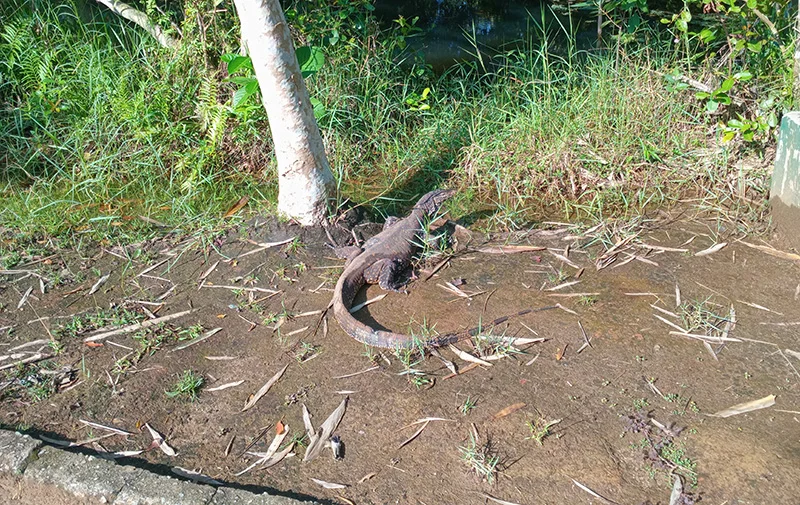
You may think sloth comes very easy,
To your kingly monitor of the shrinking marsh,
As he lies basking smugly in the morn sun,
But he is organized and alert all the while,
As he awaits his prey with patience infinite,
Free of malice, a professional of a kind,
His cumbrous body not slowing his sprite….
But note, he’s no conspirator spitting guile,
And doesn’t turn nasty unless crossed,
Nor by vengeful plans is he constantly dogged,
Unlike those animals of a more rational kind,
Whose ways have left behind a state so sorry.
By Lynn Ockersz
Midweek Review
Rajiva on Batalanda controversy, govt.’s failure in Geneva and other matters

Former President Ranil Wickremesinghe’s recent interview with Mehdi Hasan on Al Jazeera’s ‘Head-to-Head’ series has caused controversy, both in and outside Parliament, over the role played by Wickremesinghe in the counter-insurgency campaign in the late’80s.
The National People’s Power (NPP) seeking to exploit the developing story to its advantage has ended up with egg on its face as the ruling party couldn’t disassociate from the violent past of the JVP. The debate on the damning Presidential Commission report on Batalanda, on April 10, will remind the country of the atrocities perpetrated not only by the UNP, but as well as by the JVP.
The Island sought the views of former outspoken parliamentarian and one-time head of the Government Secretariat for Coordinating the Peace Process (SCOPP) Prof. Rajiva Wijesinha on a range of issues, with the focus on Batalanda and the failure on the part of the war-winning country to counter unsubstantiated war crimes accusations.
Q:
The former President and UNP leader Ranil Wickremesinghe’s interview with Al Jazeera exposed the pathetic failure on the part of Sri Lanka to address war crimes accusations and accountability issues. In the face of aggressive interviewer Mehdi Hasan on ‘Head-to-Head,’ Wickremesinghe struggled pathetically to counter unsubstantiated accusations. Six-time Premier Wickremesinghe who also served as President (July 2022-Sept. 2024) seemed incapable of defending the war-winning armed forces. However, the situation wouldn’t have deteriorated to such an extent if President Mahinda Rajapaksa, who gave resolute political leadership during that war, ensured a proper defence of our armed forces in its aftermath as well-choreographed LTTE supporters were well in place, with Western backing, to distort and tarnish that victory completely. As wartime Secretary General of the Government’s Secretariat for Coordinating the Peace Process (since June 2007 till the successful conclusion of the war) and Secretary to the Ministry of Disaster Management and Human Rights (since Jun 2008) what do you think of Wickremesinghe’s performance?
A:
It made him look very foolish, but this is not surprising since he has no proper answers for most of the questions put to him. Least surprising was his performance with regard to the forces, since for years he was part of the assault forces on the successful Army, and expecting him to defend them is like asking a fox to stand guard on chickens.
Q:
In spite of trying to overwhelm Wickremesinghe before a definitely pro-LTTE audience at London’s Conway Hall, Hasan further exposed the hatchet job he was doing by never referring to the fact that the UNP leader, in his capacity as the Yahapalana Premier, co-sponsored the treacherous Geneva Resolution in Oc., 2015, against one’s own victorious armed forces. Hasan, Wickremesinghe and three panelists, namely Frances Harrison, former BBC-Sri Lanka correspondent, Director of International Truth and Justice Project and author of ‘Still Counting the Dead: Survivors of Sri Lanka’s Hidden War,’ Dr. Madura Rasaratnam, Executive Director of PEARL (People for Equality and Relief in Lanka) and former UK and EU MP and Wickremesinghe’s presidential envoy, Niranjan Joseph de Silva Deva Aditya, never even once referred to India’s accountability during the programme recorded in late February but released in March. As a UPFA MP (2010-2015) in addition to have served as Peace Secretariat Chief and Secretary to the Disaster Management and Human Rights Ministry, could we discuss the issues at hand leaving India out?
A:
I would not call the interview a hatchet job since Hasan was basically concerned about Wickremesinghe’s woeful record with regard to human rights. In raising his despicable conduct under Jayewardene, Hasan clearly saw continuity, and Wickremesinghe laid himself open to this in that he nailed his colours to the Rajapaksa mast in order to become President, thus making it impossible for him to revert to his previous stance. Sadly, given how incompetent both Wickremesinghe and Rajapaksa were about defending the forces, one cannot expect foreigners to distinguish between them.
Q:
You are one of the many UPFA MPs who backed Maithripala Sirisena’s candidature at the 2015 presidential election. The Sirisena-Wickremesinghe duo perpetrated the despicable act of backing the Geneva Resolution against our armed forces and they should be held responsible for that. Having thrown your weight behind the campaign to defeat Mahinda Rajapaksa’s bid to secure a third term, did you feel betrayed by the Geneva Resolution? And if so, what should have the Yahapalana administration done?
A:
By 2014, given the total failure of the Rajapaksas to deal firmly with critiques of our forces, resolutions against us had started and were getting stronger every year. Mahinda Rajapaksa laid us open by sacking Dayan Jayatilleke who had built up a large majority to support our victory against the Tigers, and appointed someone who intrigued with the Americans. He failed to fulfil his commitments with regard to reforms and reconciliation, and allowed for wholesale plundering, so that I have no regrets about working against him at the 2015 election. But I did not expect Wickremesinghe and his cohorts to plunder, too, and ignore the Sirisena manifesto, which is why I parted company with the Yahapalanaya administration, within a couple of months.
I had expected a Sirisena administration to pursue some of the policies associated with the SLFP, but he was a fool and his mentor Chandrika was concerned only with revenge on the Rajapaksas. You cannot talk about betrayal when there was no faith in the first place. But I also blame the Rajapaksas for messing up the August election by attacking Sirisena and driving him further into Ranil’s arms, so that he was a pawn in his hands.
Q:
Have you advised President Mahinda Rajapaksa’s government how to counter unsubstantiated war crimes allegations propagated by various interested parties, particularly the UN, on the basis of the Panel of Experts (PoE) report released in March 2011? Did the government accept your suggestions/recommendations?
A:
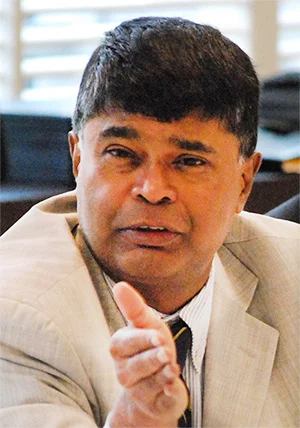
Prof. Rajiva Wijesinha
I kept trying, but Mahinda was not interested at all, and had no idea about how to conduct international relations. Sadly, his Foreign Minister was hanging around behind Namal, and proved incapable of independent thought, in his anxiety to gain further promotion. And given that I was about the only person the international community, that was not prejudiced, took seriously – I refer to the ICRC and the Japanese with whom I continued to work, and, indeed, the Americans, until the Ambassador was bullied by her doctrinaire political affairs officer into active undermining of the Rajapaksas – there was much jealousy, so I was shut out from any influence.
But even the admirable effort, headed by Godfrey Gunatilleke, was not properly used. Mahinda Rajapaksa seemed to me more concerned with providing joy rides for people rather than serious counter measures, and representation in Geneva turned into a joke, with him even undermining Tamara Kunanayagam, who, when he supported her, scored a significant victory against the Americans, in September 2011. The Ambassador, who had been intriguing with her predecessor, then told her they would get us in March, and with a little help from their friends here, they succeeded.
Q:
As the writer pointed out in his comment on Wickremesinghe’s controversial Al Jazeera interview, the former Commander-in-Chief failed to mention critically important matters that could have countered Hasan’ s line of questioning meant to humiliate Sri Lanka?
A:
How could you have expected that, since his primary concern has always been himself, not the country, let alone the armed forces?
Q:
Do you agree that Western powers and an influential section of the international media cannot stomach Sri Lanka’s triumph over separatist Tamil terrorism?
A:
There was opposition to our victory from the start, but this was strengthened by the failure to move on reconciliation, creating the impression that the victory against the Tigers was seen by the government as a victory against Tamils. The failure of the Foreign Ministry to work with journalists was lamentable, and the few exceptions – for instance the admirable Vadivel Krishnamoorthy in Chennai or Sashikala Premawardhane in Canberra – received no support at all from the Ministry establishment.
Q:
A couple of months after the 2019 presidential election, Gotabaya Rajapaksa declared his intention to withdraw from the Geneva process. On behalf of Sri Lanka that announcement was made in Geneva by the then Foreign Minister Dinesh Gunawardena, who became the Premier during Wickremesinghe’s tenure as the President. That declaration was meant to hoodwink the Sinhala community and didn’t alter the Geneva process and even today the project is continuing. As a person who had been closely involved in the overall government response to terrorism and related matters, how do you view the measures taken during Gotabaya Rajapaksa’s short presidency to counter Geneva?
A:
What measures? I am reminded of the idiocy of the responses to the Darusman report by Basil and Gotabaya Rajapaksa, who went on ego trips and produced unreadable volumes trying to get credit for themselves as to issues of little interest to the world. They were planned in response to Darusman, but when I told Gotabaya that his effort was just a narrative of action, he said that responding to Darusman was not his intention. When I said that was necessary, he told me he had asked Chief-of-Staff Roshan Goonetilleke to do that, but Roshan said he had not been asked and had not been given any resources.
My own two short booklets which took the Darusman allegations to pieces were completely ignored by the Foreign Ministry.
Q:
Against the backdrop of the Geneva betrayal in 2015 that involved the late Minister Mangala Samaraweera, how do you view President Wickremesinghe’s response to the Geneva threat?
A: Wickremesinghe did not see Geneva as a threat at all. Who exactly is to blame for the hardening of the resolution, after our Ambassador’s efforts to moderate it, will require a straightforward narrative from the Ambassador, Ravinatha Ariyasinha, who felt badly let down by his superiors. Geneva should not be seen as a threat, since as we have seen follow through is minimal, but we should rather see it as an opportunity to put our own house in order.
Q:
President Anura Kumara Dissanayake recently questioned both the loyalty and professionalism of our armed forces credited with defeating Northern and Southern terrorism. There hadn’t been a previous occasion, a President or a Premier, under any circumstances, questioned the armed forces’ loyalty or professionalism. We cannot also forget the fact that President Dissanayake is the leader of the once proscribed JVP responsible for death and destruction during 1971 and 1987-1990 terror campaigns. Let us know of your opinion on President Dissanayake’s contentious comments on the armed forces?
A: I do not see them as contentious, I think what is seen as generalizations was critiques of elements in the forces. There have been problems, as we saw from the very different approach of Sarath Fonseka and Daya Ratnayake, with regard to civilian casualties, the latter having planned a campaign in the East which led to hardly any civilian deaths. But having monitored every day, while I headed the Peace Secretariat, all allegations, and obtained explanations of what happened from the forces, I could have proved that they were more disciplined than other forces in similar circumstances.
The violence of the JVP and the LTTE and other such groups was met with violence, but the forces observed some rules which I believe the police, much more ruthlessly politicized by Jayewardene, failed to do. The difference in behaviour between the squads led for instance by Gamini Hettiarachchi and Ronnie Goonesinghe makes this clear.
Q:
Mehdi Hasan also strenuously questioned Wickremesinghe on his role in the UNP’s counter-terror campaign during the 1987-1990 period. The British-American journalists of Indian origins attacked Wickremesinghe over the Batalanda Commission report that had dealt with extra-judicial operations carried out by police, acting on the political leadership given by Wickremesinghe. What is your position?
A:
Wickremesinghe’s use of thugs’ right through his political career is well known. I still recall my disappointment, having thought better of him, when a senior member of the UNP, who disapproved thoroughly of what Jayewardene had done to his party, told me that Wickremesinghe was not honest because he used thugs. In ‘My Fair Lady,’ the heroine talks about someone to whom gin was mother’s milk, and for Wickremesinghe violence is mother’s milk, as can be seen by the horrors he associated with.
The latest revelations about Deshabandu Tennakoon, whom he appointed IGP despite his record, makes clear his approval for extra-judicial operations.
Q:
Finally, will you explain how to counter war crimes accusations as well as allegations with regard to the counter-terror campaign in the’80s?
A:
I do not think it is possible to counter allegations about the counter-terror campaign of the eighties, since many of those allegations, starting with the Welikada Prison massacre, which Wickremesinghe’s father admitted to me the government had engendered, are quite accurate. And I should stress that the worst excesses, such as the torture and murder of Wijeyedasa Liyanaarachchi, happened under Jayewardene, since there is a tendency amongst the elite to blame Premadasa. He, to give him his due, was genuine about a ceasefire, which the JVP ignored, foolishly in my view though they may have had doubts about Ranjan Wijeratne’s bona fides.
With regard to war crimes accusations, I have shown how, in my ‘Hard Talk’ interview, which you failed to mention in describing Wickeremesinghe’s failure to respond coherently to Hasan. The speeches Dayan Jayatilleke and I made in Geneva make clear what needed and still needs to be done, but clear sighted arguments based on a moral perspective that is more focused than the meanderings, and the frequent hypocrisy, of critics will not now be easy for the country to furnish.
By Shamindra Ferdinando
-
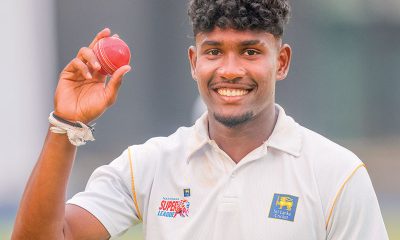
 Sports2 days ago
Sports2 days agoSri Lanka’s eternal search for the elusive all-rounder
-

 Features6 days ago
Features6 days agoCelebrating 25 Years of Excellence: The Silver Jubilee of SLIIT – PART I
-

 Business6 days ago
Business6 days agoCEB calls for proposals to develop two 50MW wind farm facilities in Mullikulam
-
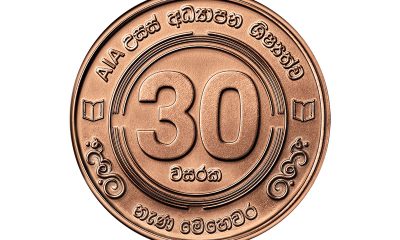
 Business4 days ago
Business4 days agoAIA Higher Education Scholarships Programme celebrating 30-year journey
-
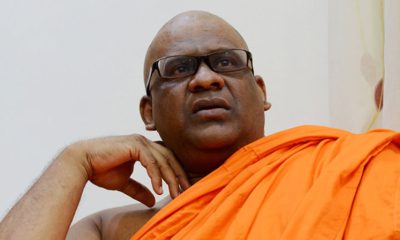
 News3 days ago
News3 days agoGnanasara Thera urged to reveal masterminds behind Easter Sunday terror attacks
-
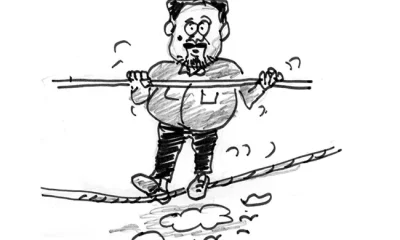
 Features6 days ago
Features6 days agoNotes from AKD’s Textbook
-

 News2 days ago
News2 days agoComBank crowned Global Finance Best SME Bank in Sri Lanka for 3rd successive year
-
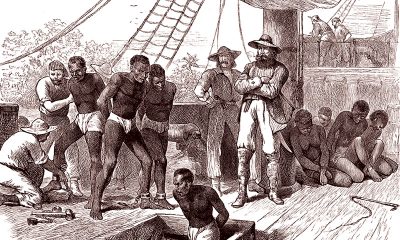
 Features2 days ago
Features2 days agoSanctions by The Unpunished











